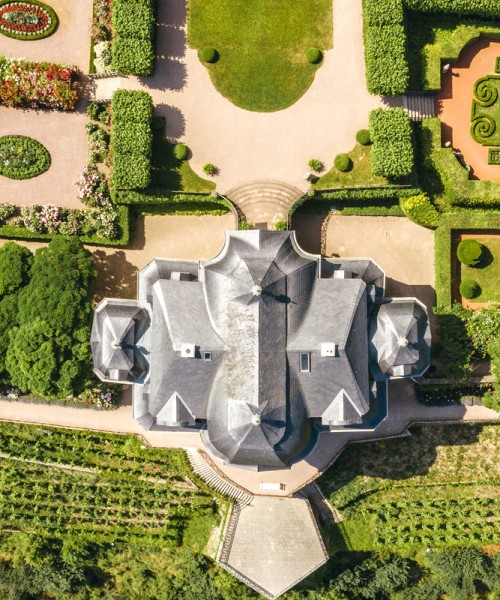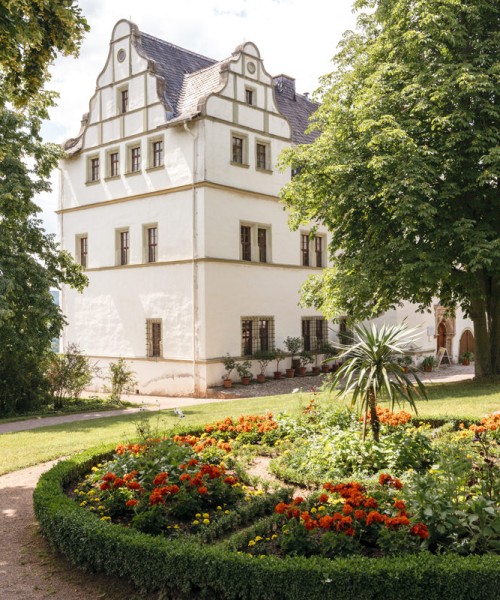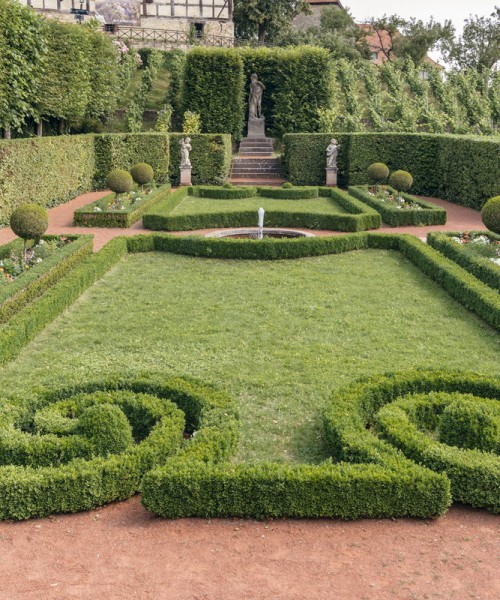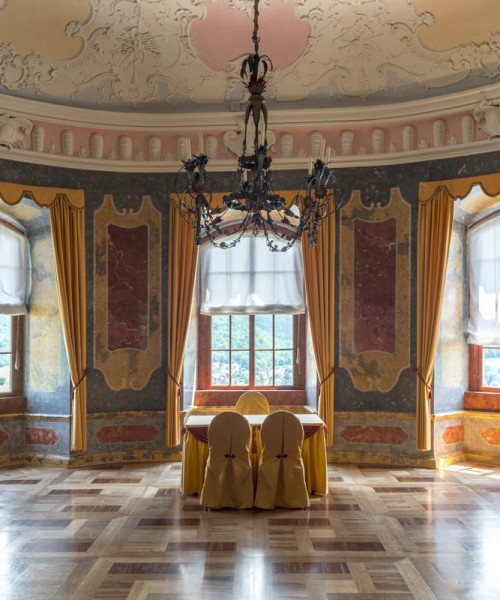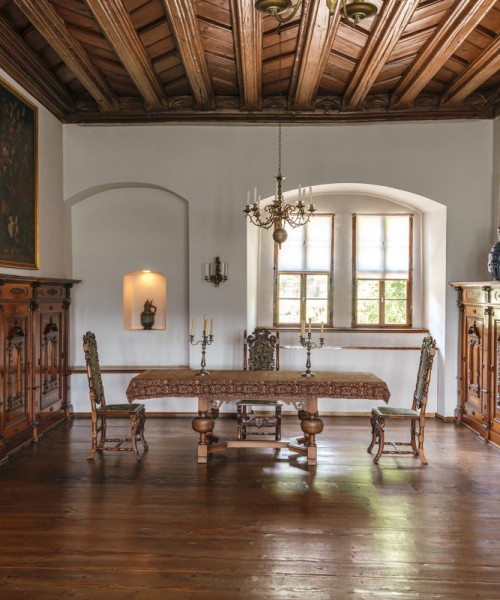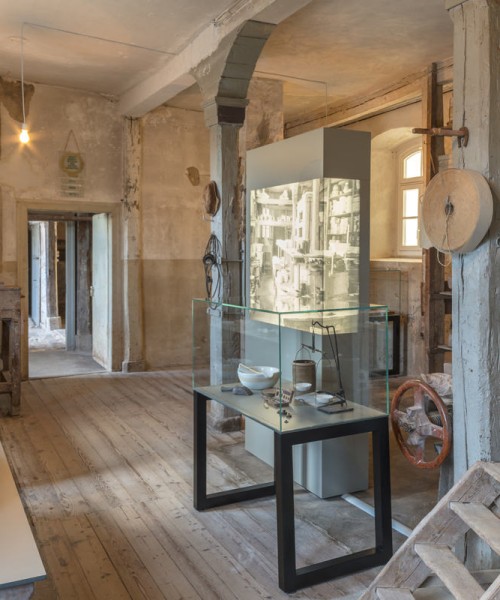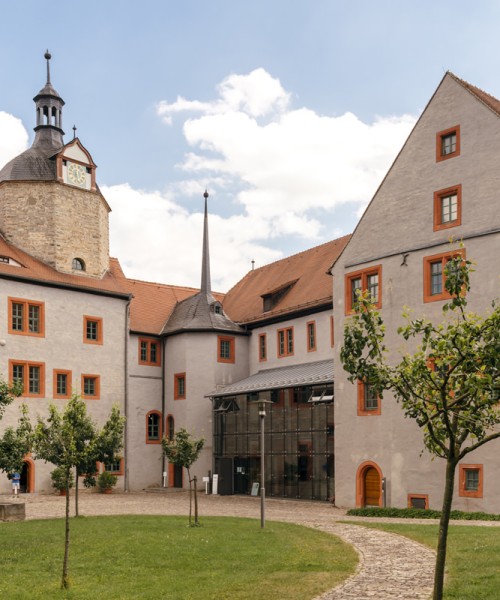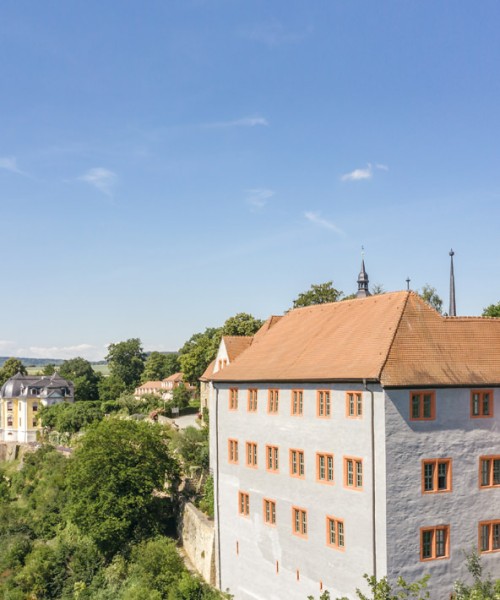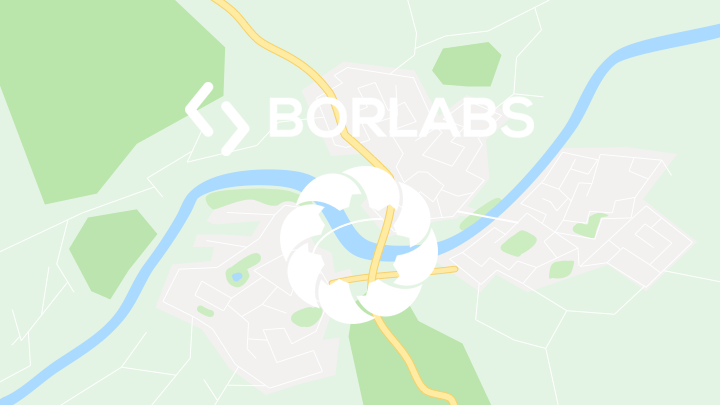Dornburg Palaces and Gardens
A jewel above the Saale Valley
The Dornburg Palaces rise high above the Saale on a shell limestone cliff - an impressive ensemble of three buildings. Their spectacular location overlooking the Saale Valley makes them a unique excursion destination that captivates both culture and nature lovers.
Three palces, three eras
The Old Palace, whose origins date back to the High Middle Ages, impresses with its striking hexagonal keep. Originally built as a castle, it was converted into a palace in the 16th century and later served as the administrative seat of the Duchy of Saxe-Weimar-Eisenach.
The Renaissance Palace, an elegant residential building from the 16th century, took on its current significance in the 19th century. Grand Duke Carl August used it as a private retreat and received his long-time friend Johann Wolfgang von Goethe here. Important poems and scientific notes were written in this inspiring environment.
The Rococo Palace, the youngest of the three palaces, was built in the mid-18th century by Duke Ernst August I of Saxe-Weimar. Its magnificent ballroom with colorful stucco marble still bears witness to the opulent elegance of the Rococo period.
Gardens full of variety and history
The palaces are embedded in an impressive garden landscape with a wide variety of stylistic elements. Romantic rose arbors, extensive fruit and grass gardens and terraced vineyards make the ensemble a paradise for strollers and garden lovers.
A lively cultural venue
Today, Dornburg's palaces combine tradition with modernity. In addition to historical insights, the museums offer changing exhibitions - from princely splendor to Bauhaus design. An annual highlight is the Dornburg Palace Night in August, which immerses the gardens and buildings in a unique atmosphere with music, light installations and artistic contributions.
Whether for history enthusiasts, architecture connoisseurs or walkers in search of inspiration - the Dornburg Palaces invite you on an unforgettable journey through time.
Amenities and Facilities

Bus
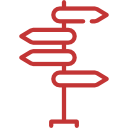
Guided tours

Open

Children's program

Museum store

Parking

Events

Restroom
Hours of Operation and Ticket Prices
Palaces
April to October
10:00 a.m. - 5:00 p.m.
Wednesdays closed. Open on holidays.
Gardens
Open from 9:00 a.m. until dusk.
Important info
Due to extensive renovation work, the museum in the Renaissance castle will remain closed until 2028.

